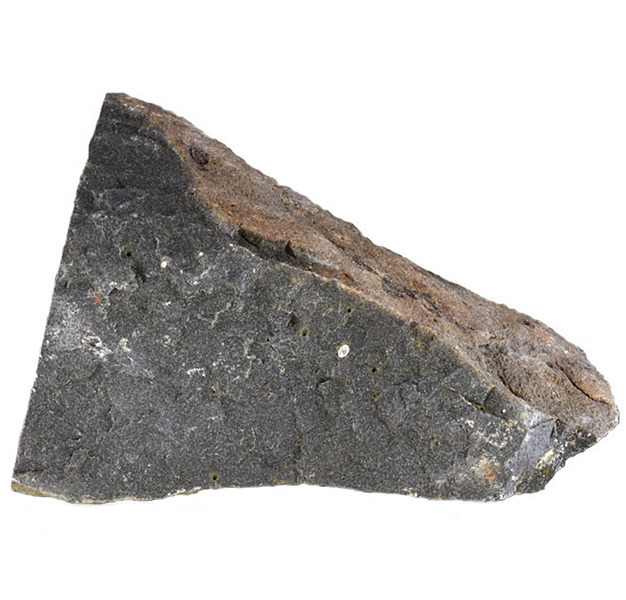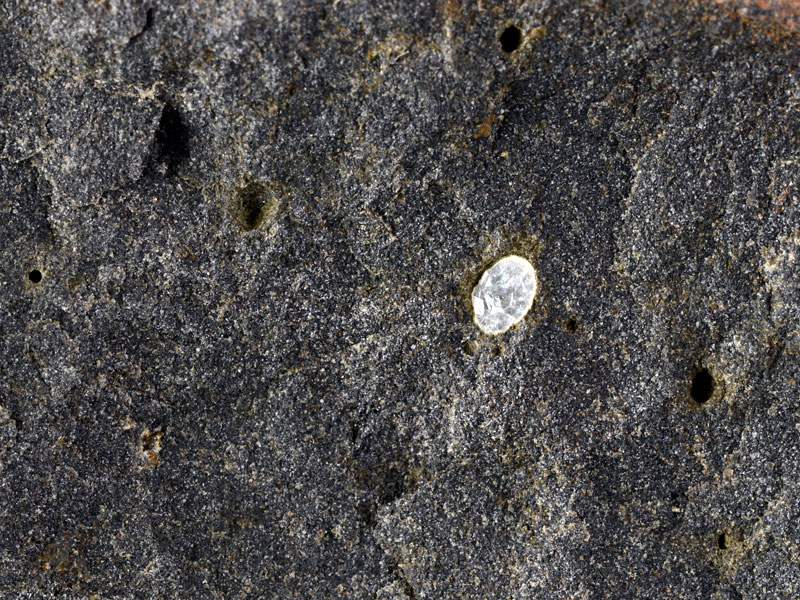
Fact sheet
This fine-grained basalt comes from the Isle of Staffa, which lies east of the Isle of Mull in the Inner Hebrides of Scotland. The island is perhaps most famous for the rock formation known as Fingal’s Cave, which exhibits striking columnar jointing in a basalt lava flow, and inspired part of the Hebrides Overture by the romantic composer Mendelssohn.
This sample of fine-grained basalt is composed of grains of pyroxene, olivine and plagioclase. The grain size is generally less than 100 microns in diameter, with occasional larger plagioclase phenocrysts up to 500 microns. A matrix of glass appears fresh and unaltered in most of the thin section, but in places it has altered to clays and appears brown stained in patches where fluids have penetrated the rock.
The United Kingdom Virtual Microscope (UKVM) collection consists of igneous, sedimentary and metamorphic rocks from around the UK.
It is intended as a teaching resource, helping to tell the story of the common rock types and how they form, and reflecting the history of the UK at the margins of the continent of Europe. The collection is a series of teaching sets, for example igneous rocks from the North Atlantic Igneous Province and SW England; high-temperature metamorphic rocks from Scotland and low-temperature metamorphic rocks from Wales; and sedimentary rocks, including English limestones and sandstones.






